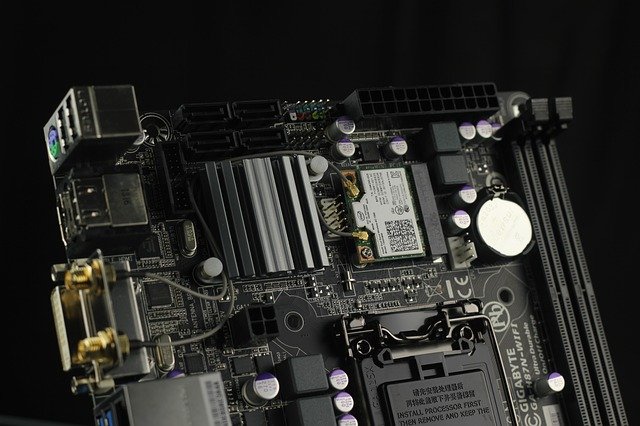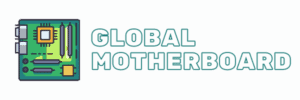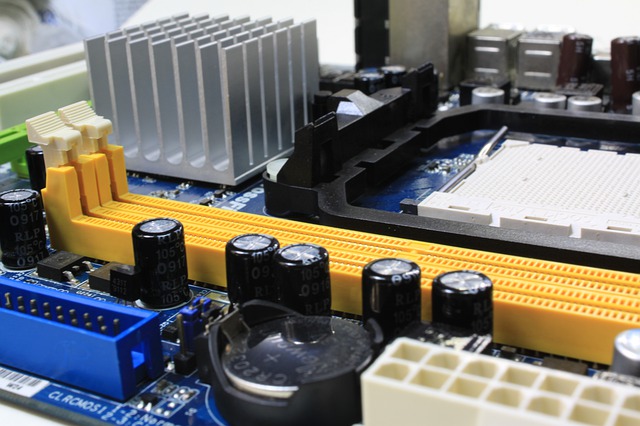Motherboards are the most complex component in the world of your computer. Equipped with hundreds of components and dozens of options, it can be difficult to choose. Before building your next computer, let’s look at the most important factors to help you decide.
Motherboard Dimensions
Motherboards come in different shapes and sizes, but fortunately there are some standards with which many motherboards and cases can work together.
Often times these dimensions apply to all desktop computers but some computers you buy from manufacturers do not follow all the rules.
This is usually fine when you buy the computer as a unit, but it becomes difficult if you want to fit a new motherboard inside the case or make one from scratch.
The most common motherboard size is Intel’s Advanced Technology Extended (ATX) and its derivatives. The chart below has some of the most common ATX sizes.
The motherboard dimensions indicate not only the size of the board and the placement of the mounting screws, but also determine the overall layout of the main components in the board. Have you ever noticed that almost all motherboards’ CPU, RAM and I / O ports are located in the same place?
This is because they are determined by the board standard. Otherwise, the components would have to be in the same place, and power supply manufacturers couldn’t easily sell you something that worked with your motherboard, no matter who did it.
Intel’s second standardization attempt was made with the boards with Balanced Technology Extended (BTX). The BTX’s main focus was to resolve the ATX’s airflow and component placement limitations.
Although the BTX was supposed to be the successor to the ATX form factor, it did not gain enough traction to take place in the consumer market. Some major computer manufacturers such as HP, Dell, and Apple still use BTX or special variations of it.
Which Motherboard to Choose According to the Chipsets Type?
The processor socket you choose is the decision to consider which CPUs you can use on your computer. If the processor is not suitable, you cannot use it. Intel and AMD both have their own series of processors and sockets that are only compatible with their chips.
The first thing you need to decide is which processor you want and then which slot you will need. Intel’s slots usually have an easy name, like Socket H, and a technical name like LGA 1156.
The friendly name is easier to remember when the technical name tells you about the socket. For example, LGA 1156 stands for Land Grid Array and has 1156 pins. It’s not worth it to explain which processors work in which slots, as processors and motherboards change so often.
Instead, you can get information from your manufacturer about which series of CPUs work with which motherboards. Typically, a low power for Intel’s consumer sockets, e.g.
Socket 441 for atom processors, a midrange, e.g. Socket H for Celeron, Core i3, Core i5 and Core i7 800 series processors; Socket B for Core i7 900 series processors. If you want to use an Intel processor, you need to find out which socket supports the processor you want.
AMD hasn’t changed quite often, Intel, and in the last 5 years there were only 3 main consumer sockets. AM2, AM2 + and AM3 sockets currently support nearly all of AMD’s consumer processors. AM2 and AM2 + are often interchangeable and introduced to support AM3 DDR3 memory.
Either way, it’s a good idea to choose your processor a second time, then your motherboard. If you buy a socket without processor support, this will not do you well.
Which Motherboard to Choose According to the Chipsets Type?
Chipset is the way your CPU, RAM, video card and peripherals communicate. It is a combination of north bridge and south bridge and can add very nice features depending on your needs. North bridge typically very fast communication between the CPU, RAM and your video card.
You will have features such as SLI / Crossfire and DDR3. With current Intel and AMD processors, all north bridge functionality is included in the processor. This usually means less complexity for your motherboard and less latency for the processor to access high-speed components like RAM.
Integration is great news for performance, but sometimes bad news for options. For example, because AMD owns ATI, they may have the ability to lock the latest gaming graphics cards to have certain features if you’re only using an AMD processor.
This also drove companies like Nvidia from the north bridge market, which made one of the best north bridge chips in the Pentium 4 processor days.
Features such as the south bridge will give support for the latest PCI-E, SATA, USB 3 and many more future technologies. It is also important to know what options you need, as some south bridges may not support every feature you expect, such as RAID and surround sound. With most manufacturers, they will clearly indicate the available features without having to dive deep into the south bridge chipset specs.

Because this combination of features + processors + options is huge and changes several times a year, it will be impossible to list every option here. Instead, you just need to know your motherboard when choosing what features you need, then look for those options on your motherboard’s chipset.
Which Motherboard to Choose According to the RAM Type?
The chipsets in motherboards also determine the amount and structure of memory (RAM) to be evaluated. Current motherboards; While it supports DDR4 memory regardless of brand, model and chipset, the motherboards developed in previous years can be used with DDR3 memory.
The thing to note here is whether you will overclock the memory you will acquire with current and frequency changes, as in the processors. Because some chipsets enable this process to be implemented, others allow memory to be used at their standard speed.
If you are professionally evaluating the applications where memory speed is important, if you intend to include 3200 MHz and higher DDR4 memory modules in your computer, overclocking supported motherboards may be the ideal choice for you.
What Types of Connection Should Be?
The first thing that comes to mind when acquiring computer hardware components is “What should we pay attention to when buying a motherboard?” the question is; It includes the quality circuit components of the motherboards, the number of slots, and the new generation connection ports.
Because motherboards; Along with units that require low speed data transfer such as keyboard, mouse, printer; USB memory, external disk, VR headsets and many more devices that provide high speed data transfer can be connected. At this point, the number of USB ports and in what format the motherboards you acquire are important.
Most modern motherboards have several USB 2.0, USB 3.0 and USB 3.1 ports. While peripherals such as keyboards and mice are plugged into USB 2.0 ports, VR sets can be operated efficiently through the new generation smartphones that can be charged quickly, through USB 3.0 and USB 3.1 ports.
The number and speed of USB ports routed to the front panels of the cases may also vary depending on the motherboard selected. In addition, some motherboards may have HDMI and DisplayPort ports that can transfer images produced by the internal graphics chips inside the processors.
Which Internal Features Should Be?
One of the areas where chipsets in motherboards are decisive is the built-in features offered by the product. The ability to evaluate hard disks as RAID 0, RAID 1, RAID 5 and RAID 10, to run M.2 storage units with RAID configuration, to use Intel’s new generation temporary memory modules depend on chipsets.
In addition, having more than one Ethernet port, practical BIOS configurations, double-digit Debug code LEDs make life easier for those who want to benefit from all the features of the motherboard.
Built-in sound cards can also influence users’ choice of motherboards, allowing music, gaming and multimedia enthusiasts to achieve near-perfect sound quality without purchasing an external sound card.
Motherboards that can present the multi-channel sounds they create with independent ports or optical outputs can bring extras such as headphone enhancement and virtual sound effect.

